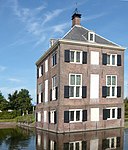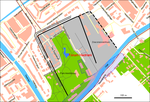Voorburg

Voorburg is a town and former municipality in the west part of the province of South Holland, Netherlands. Together with Leidschendam and Stompwijk, it makes up the municipality Leidschendam-Voorburg. It has a population of about 39,000 people. It is considered to be the oldest city in The Netherlands and celebrated its 2000th year of existence in 1988. However in Holland the status of 'city' normally commenced with the bestowing of a 'city charter' by a its sovereign leader(s) and none is available that old. Human occupation has certainly been established as occurring two millennia ago, where Voorburg is located now. In 2002, the cities of Leidschendam and Voorburg were merged under the new municipality named "Leidschendam-Voorburg". Situated adjacent to the city of The Hague, it is often regarded as one of its suburbs.
Excerpt from the Wikipedia article Voorburg (License: CC BY-SA 3.0, Authors, Images).Voorburg
Laan van Nieuw Oosteinde, Leidschendam-Voorburg
Geographical coordinates (GPS) Address Nearby Places Show on map
Geographical coordinates (GPS)
| Latitude | Longitude |
|---|---|
| N 52.07 ° | E 4.355 ° |
Address
Heer Hubrechtstraat
Laan van Nieuw Oosteinde
2274 EM Leidschendam-Voorburg
South Holland, Netherlands
Open on Google Maps








